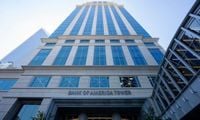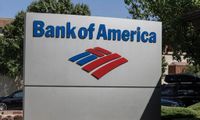Seventeen years after the 2008 financial crisis reshaped how U.S. banks are regulated, Bank of America (BofA) Corp. has been ordered to pay $540 million to the Federal Deposit Insurance Corp. (FDIC) in a legal dispute tied to deposit insurance assessments. The ruling, detailed in a March 31 court filing, resolves a lawsuit the FDIC filed in 2017 over the bank’s interpretation of a post-crisis rule governing risk exposure calculations.
U.S. District Judge Loren AliKhan found that the bank underpaid assessments owed to the FDIC’s deposit insurance fund under a 2011 rule change. Initially, the FDIC sought nearly $2 billion, which included about $1 billion in unpaid fees and another $1 billion allegedly earned by BofA by not making full contributions. The judge rejected the forfeiture of profits but upheld the requirement for partial payments, including interest.
The rule at issue was part of the FDIC’s effort to adjust how large financial institutions report their counterparty exposure data, which is used to calculate quarterly insurance premiums. The agency required banks to consolidate exposures across all affiliated entities under one umbrella figure. According to Bloomberg’s report, the FDIC claimed BofA reported exposures individually, which resulted in lower perceived risk and reduced payment obligations.
The court’s decision permits the FDIC to recover unpaid assessments from mid-2013 through 2014 but bars earlier claims due to statutory limits. At the time, BofA held about $1.2 trillion in U.S. deposits, with $700 billion covered by the FDIC’s $250,000-per-depositor insurance cap. The agency argued that the underpayments were significant for its $81 billion insurance fund.
In defense, BofA argued its reporting method was disclosed to the agency and acted in good faith. The bank maintained that the rule’s language was unclear. “We are pleased the judge has ruled and have reserves reflecting the decision,” said BofA spokesperson Bill Halldin, as quoted by Bloomberg.
In her ruling, AliKhan concluded that the rule’s text was not ambiguous and that the FDIC acted within the authority granted to it by Congress. The court found that BofA should have been able to identify the required standards based on the rule’s language. The FDIC identified BofA as the only bank that deliberately failed to comply with the 2011 rule. According to the agency, another institution made a similar reporting error but later corrected its filings.
In a decision made public on Monday, April 14, 2025, U.S. District Judge Loren AliKhan stated that the bank was liable for “lawfully payable” assessments, though far less than the nearly $2 billion that the agency had sought. The judge's ruling covers assessments from the second quarter of 2013 through the end of 2014, plus interest.
The FDIC sued Charlotte, North Carolina-based Bank of America for $1.12 billion in 2017, accusing it of reducing its deposit insurance contributions by failing to honor a 2011 rule that changed how banks report risk exposure to counterparties. This rule was one of many federal reforms designed to ensure the stability of the banking system and avert a repeat of the 2008 global financial crisis.
In a 59-page decision, AliKhan rejected Bank of America’s claims that there was no reasonable basis for the rule, and that the FDIC acted arbitrarily and capriciously. AliKhan stated that the FDIC was not required to develop a "perfect measure" of predicting banks’ potential exposure to losses, and Bank of America could claim it "lacked fair notice of what was required of it." However, she also noted that the FDIC waited too long to sue over claims predating the second quarter of 2013.
Bank of America strongly denied any intent to evade payments. Bill Halldin, a Bank of America spokesperson, reiterated the bank's stance, stating, "We are pleased the judge has ruled and have reserves reflecting the decision." The FDIC declined to comment on the case.
The case is significant not only for its financial implications but also for its timing. This decision came at a time when the FDIC, like other regulatory agencies, is being rapidly reshaped. The FDIC’s new acting chairman, Travis Hill, indicated at the start of the new administration in January that he would conduct a wholesale review of regulations, guidance, and manuals and adopt a more open-minded approach to innovation and technology adoption.
In March, the FDIC provided new guidance stating that FDIC-supervised institutions can engage in crypto-related activities without receiving prior FDIC approval, provided they adequately manage the associated risks. Previously, under a guidance that is now rescinded, the FDIC required prior notification of those activities.
Bank of America’s case highlights the ongoing tension between regulatory oversight and corporate compliance in the banking sector. As the landscape evolves, financial institutions must navigate complex regulations while ensuring they meet their obligations to protect depositors and maintain the stability of the financial system.
The court's decision underscores the importance of clarity in regulatory language and the need for banks to adhere strictly to the rules set forth by governing bodies. As the financial world continues to adapt to new challenges and innovations, the outcome of this case may set a precedent for how similar disputes are handled in the future.







